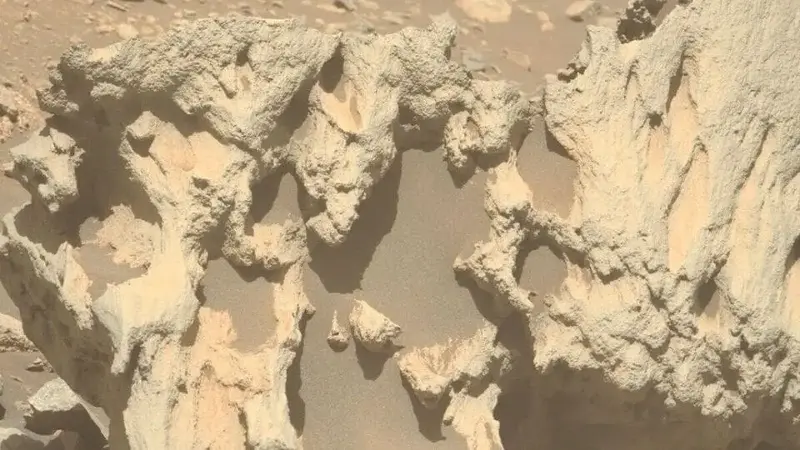
NASA’s Perseverance rover has discovered an unusual iron- and nickel-rich rock on Mars that scientists believe may be a meteorite — a fragment that originated elsewhere in the solar system.
During its latest survey of the bedrock in the “Vernodden” region, the rover identified a striking, sculpted rock named “Phippsaksla,” measuring about 80 centimeters across. Its tall, carved appearance stood out sharply against the surrounding flat, fractured terrain.
Using its SuperCam instrument, Perseverance analyzed the rock and found it to be high in iron and nickel — a hallmark of iron-nickel meteorites formed in the cores of large asteroids. This suggests the rock may have originated beyond Mars before landing on the planet’s surface.
NASA scientists say further analysis is required before confirming its meteorite status. If verified, it would join the list of meteorites examined by previous Mars rovers.
Perseverance mission overview
Launched on July 30, 2020, aboard a United Launch Alliance Atlas V rocket from Cape Canaveral, Perseverance arrived on Mars on February 18, 2021. The rover carries seven advanced scientific instruments and is designed to:
-Search for signs of ancient microbial life
-Study the geology and climate of Mars
-Collect and cache rock and soil samples for future return missions
-Test new technologies for upcoming human exploration
Weighing just under 2,300 pounds, the rover is about the size of a small car.
Part of NASA’s Moon-to-Mars strategy
Perseverance plays a key role in NASA’s broader Moon to Mars exploration plan. Through the Artemis program, NASA aims to establish a sustained human presence on and around the Moon by 2028 as preparation for eventual human missions to Mars.
Managed by NASA’s Science Mission Directorate and Jet Propulsion Laboratory, the mission continues to advance understanding of Mars’ ancient environments — and possibly, its rocky visitors from deep space.
